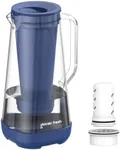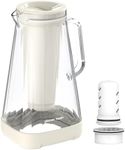Buying Guide for the Best Water Distiller
Choosing the right water distiller is essential for ensuring you have access to pure, clean water. A water distiller works by boiling water and then condensing the steam back into liquid, leaving contaminants behind. When selecting a water distiller, it's important to consider several key specifications to ensure it meets your needs. Understanding these specifications will help you make an informed decision and choose the best water distiller for your household or personal use.CapacityCapacity refers to the amount of water a distiller can process at one time. This is important because it determines how much distilled water you can produce in a single cycle. Capacities can range from small, personal units that produce around 1 gallon per cycle to larger units that can produce several gallons. If you have a small household or only need distilled water occasionally, a smaller capacity may suffice. For larger households or frequent use, a higher capacity distiller would be more efficient.
Distillation SpeedDistillation speed is the rate at which the distiller can produce distilled water, usually measured in gallons per hour. This is important because it affects how quickly you can obtain distilled water. Speeds can vary from around 1 gallon every 4-6 hours to faster models that can produce water more quickly. If you need distilled water quickly or in large quantities, look for a model with a higher distillation speed. For occasional use, a slower speed may be acceptable.
Material QualityThe material quality of a water distiller affects its durability and the purity of the water produced. Common materials include stainless steel and plastic. Stainless steel is preferred for its durability and resistance to corrosion, ensuring a longer lifespan and maintaining water purity. Plastic components should be BPA-free to avoid any potential health risks. If you prioritize longevity and water purity, opt for a distiller with high-quality stainless steel components.
Ease of UseEase of use encompasses how simple it is to operate and maintain the water distiller. This includes features like automatic shut-off, easy-to-read controls, and straightforward cleaning processes. A user-friendly distiller will save you time and effort, making the distillation process more convenient. If you prefer a hassle-free experience, look for models with intuitive controls and easy maintenance features.
Size and PortabilitySize and portability refer to the physical dimensions and weight of the water distiller. This is important if you have limited counter space or need to move the distiller frequently. Compact and lightweight models are ideal for small kitchens or for those who need a portable solution. If space is not an issue and the distiller will remain in a fixed location, a larger model may be suitable.
Energy ConsumptionEnergy consumption indicates how much electricity the distiller uses during operation. This is important for understanding the ongoing cost of running the distiller and its environmental impact. Energy-efficient models will use less electricity, saving you money on utility bills and reducing your carbon footprint. If you are concerned about energy usage, look for models with lower wattage or energy-saving features.
Filtration SystemSome water distillers come with additional filtration systems, such as activated carbon filters, to further purify the water by removing any remaining impurities or odors. This is important for ensuring the highest quality of distilled water. If you want the purest water possible, consider a distiller with an integrated filtration system. For basic distillation needs, a standard distiller without extra filters may be sufficient.

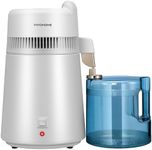



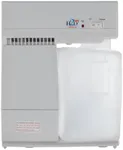







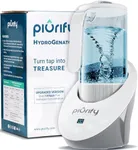
![[Alkaline] Waterdrop Glass Alkaline Water Filter Pitcher with 1 Filter, Enhances Alkaline Water, Eco-Friendly, 7-Cup, for Home and Office, Reduces PFOA/PFOS, Chlorine, Cadmium, Copper, Mercury, Clear](https://images-proxy.bestreviews.guide/3JJWK9-XTLkhM6ggGZA3KN22Qlg=/0x150/https://m.media-amazon.com/images/I/31JFkJl1xDL._AC_CX679_.jpg)

